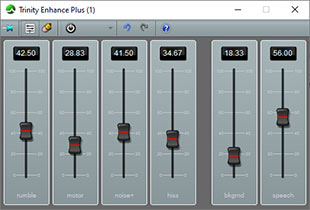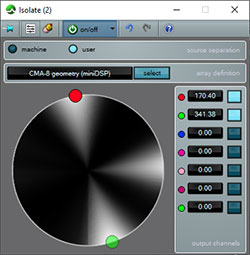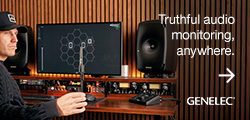Cedar Audio has announce the immediate availability of Cedar Cambridge 14, claiming ‘a significant step forward’ for the company’s flagship noise reduction and audio restoration system.
Numerous features feature in the new version, including five major processes and addition to architectural improvements. These include VoicEX voice extractor, Trinity Enhance Plus, Isolate blind source separation, Mixer, Time Stretch, Voice Activity Detection, video saving with audio synchronisation and Opus file compatibility.
Cedar’s AI-based VoicEX voice extractor incorporates algorithmic features that take it beyond standard DNN-based noise reduction techniques, and it’s able to separate voices (primarily but not limited to speech) from other sounds and to perform superior noise reduction when compared with traditional signal processing techniques.
VoicEX creates two signal streams – one containing any voices identified within the input and the other containing everything else. To eliminate the noise, users need only reduce the background level to the desired degree. Alternatively, they can reduce the voice level to suppress or even eliminate the speech.
 Alongside VoicEX, the Trinity Enhance Plus filter bank is derived from the latest Cedar Trinity surveillance system and is designed specifically for audio forensic use. It provides six related tools that allow users to suppress background noise, increase the intelligibility of speech, and enhance the background if that contains wanted detail. With six controls, it offers huge flexibility but remains simple enough for novices to achieve excellent results across a wide range of material.
Alongside VoicEX, the Trinity Enhance Plus filter bank is derived from the latest Cedar Trinity surveillance system and is designed specifically for audio forensic use. It provides six related tools that allow users to suppress background noise, increase the intelligibility of speech, and enhance the background if that contains wanted detail. With six controls, it offers huge flexibility but remains simple enough for novices to achieve excellent results across a wide range of material.
Cedar’s Isolate blind source separation module identifies and separates individual audio sources within a live stream or recording obtained using a suitable microphone array. It can identify all of the independent sound sources within the soundfield (not just the loudest ones), and it will work with any suitable multichannel signal, whether the geometry of the array is known or not.
This is different from beamforming, which is a technology for steering a virtual microphone in a known direction. In contrast, Isolate decomposes the unknown soundfield into multiple distinct sources of interest without a-priori knowledge of the locations of the speakers or other sounds. Further, the microphone array can be far smaller than that needed for a beamformer. For both of these reasons, Isolate is more flexible and can achieve superior results quicker and more easily than other methods.
Although it has uses elsewhere in Cedar Cambridge, the new Mixer module was designed specifically to allow users to monitor selected signals obtained from Isolate, allowing them to mix wanted sources to identify and reconstruct conversations from its multichannel output.
 The algorithm in Time Stretch has been optimised for speech signals. Users can adjust the speed of signals within the range 20%-200% without altering their pitch, and Time Stretch offers four modes to preserve the quality of different types of signal. Users can even apply time stretching to A/V files. Not only will the audio be stretched, but the video will also be stretched to maintain synchronisation.
The algorithm in Time Stretch has been optimised for speech signals. Users can adjust the speed of signals within the range 20%-200% without altering their pitch, and Time Stretch offers four modes to preserve the quality of different types of signal. Users can even apply time stretching to A/V files. Not only will the audio be stretched, but the video will also be stretched to maintain synchronisation.
The Voice Activity Detector is another area in which AI makes its mark in the new system. Listeners working with large volumes of material will often want to focus on sections of the audio that contain speech and, up until now, this was only possible by listening to the recording. In Cedar Cambridge 14, a DNN indicates where it is most likely that speech occurs in the timeline. This will be a major benefit to users working in the field of audio forensics
Another major new feature will benefit everyone who works with audio extracted from video files. Previously, the processed audio had to be saved to an audio file and recombined with the video in a video workstation, but Cedar Cambridge is now able to save video files with the cleaned audio perfectly synchronised with the video – even if the audio has been time stretched or processed using Respeed to remove problems such as wow and other speed variations. It’s not just that the correct duration is maintained – the video is correctly rendered at every point, tracking the speed variations to retain lip-sync throughout.
Cedar Cambridge 14 is now compatible with the Opus audio file format. Originally developed for efficient internet communications, this has been widely adopted by manufacturers working in the fields of audio forensics and surveillance, and is held to offer superior audio quality to other compressed audio formats at any given bit rate.
More: www.cedaraudio.com










